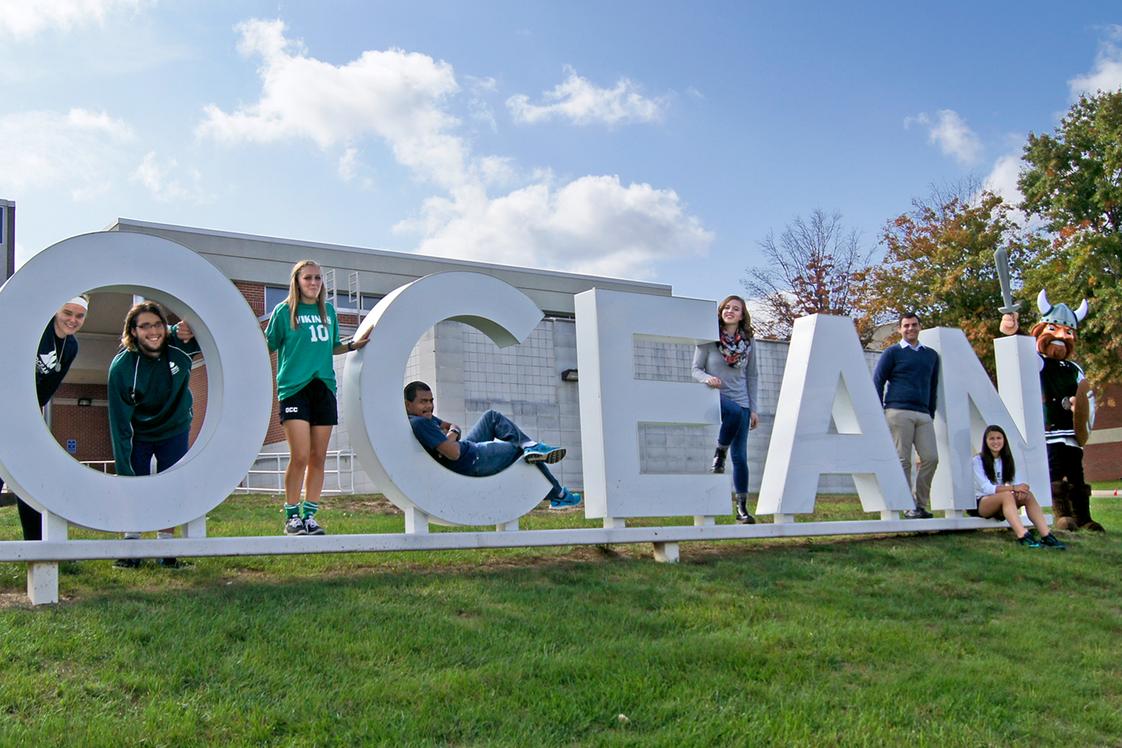- Ocean County College, an innovative academic leader, provides affordable, student-centered, high quality educational experiences that prepare and empower diverse learners to contribute to and succeed in global societies. OCC invests in and fosters academic, economic, and cultural excellence and ensures financial strength by generating new revenue streams, engaging in national and international university and corporate partnerships, and cultivating a technologically progressive and entrepreneurial spirit.
School Highlights
Ocean County College serves 12,367 students (32% of students are full-time).
The college's student:teacher ratio of 20:1 is higher than the state community college average of 19:1.
Minority enrollment is 34% of the student body (majority Hispanic), which is less than the state average of 65%.
Quick Stats (2025)
- Enrollment: 12,367 students
- In-state tuition: $4,515
- Out-state tuition: $7,695
- Acceptance Rate: 100%
- Student:teacher ratio: 20:1
- Minority enrollment: 34%
- Source: Verified school update
Top Rankings
Ocean County College ranks among the top 20% of public schools in New Jersey for:
Category
Attribute
Community Size
School Overview
The teacher population of 615 teachers has stayed relatively flat over five years.
Ocean County College
(NJ) Community College Avg.
Carnegie Classification
Associate's Colleges: High Transfer-High Nontraditional
Baccalaureate Colleges: Diverse Fields
Institution Level
At least 2 but less than 4 years
At least 2 but less than 4 years
Institution Control
Public
Private not-for-profit
Total Faculty
615 staff
439 staff
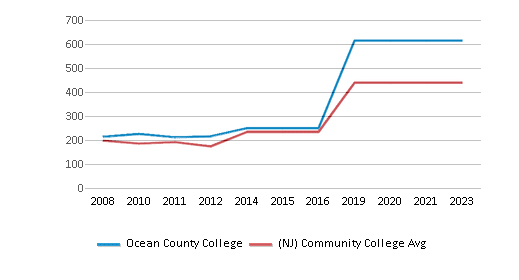
School Calendar
Student Body
The student population of Ocean County College has grown by 51% over five years.
The student:teacher ratio of 20:1 has increased from 12:1 over five years.
The Ocean County College diversity score of 0.53 is less than the state average of 0.77. The school's diversity has stayed relatively flat over five years.
Total Enrollment
12,367 students
1,067 students
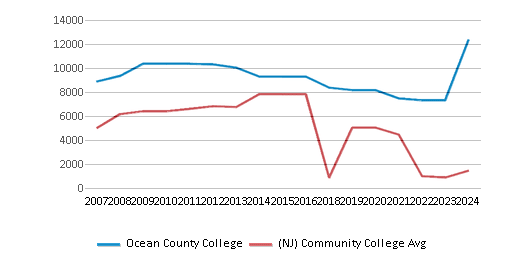
Student : Teacher Ratio
20:1
19:1
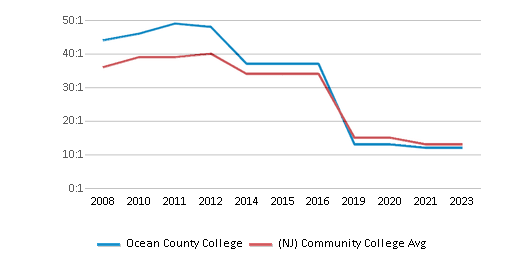
# Full-Time Students
3,934 students
699 students
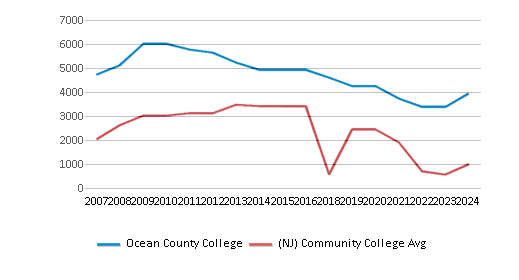
# Part-Time Students
8,433 students
1,319 students
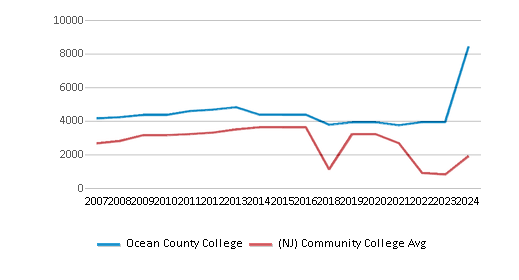
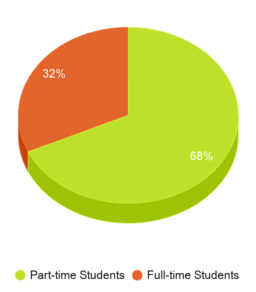
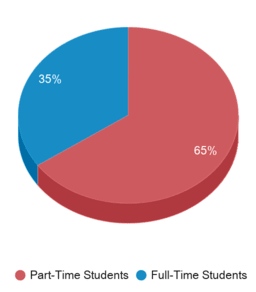
# Enrollment Undergraduate
123 students
327 students
# Full-Time Undergraduate Students
3,934 students
699 students
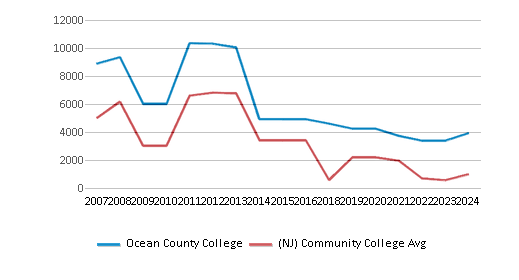
# Full-Time Graduate Students
n/a
50 students
# Part-Time Undergraduate Students
8,433 students
1,213 students
# Part-Time Graduate Students
n/a
6 students
Total Dormitory Capacity
n/a
20 students
% American Indian/Alaskan
n/a
n/a
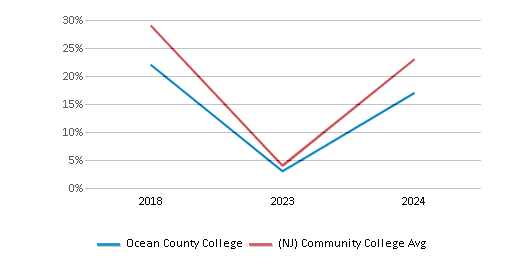
% Asian
4%
8%
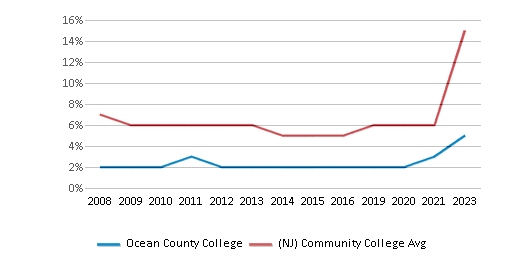
% Hispanic
16%
26%

% Black
6%
15%

% White
66%
35%
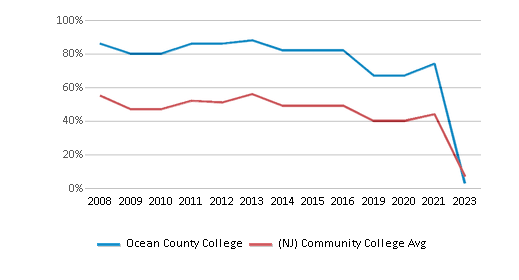
% Hawaiian
n/a
1%
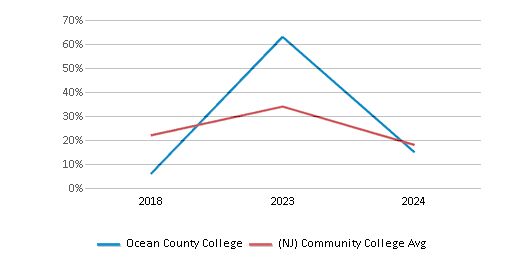
% Two or more races
3%
3%
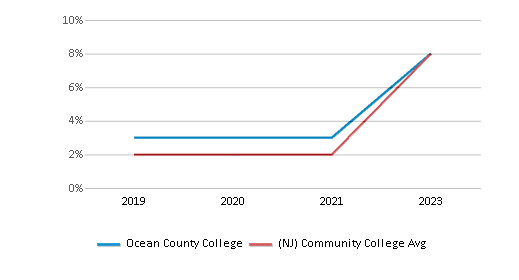
% Non Resident races
1%
2%
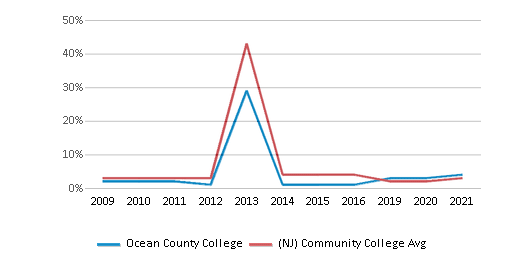
% Unknown races
3%
10%
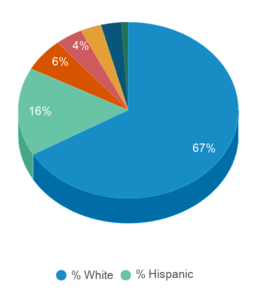
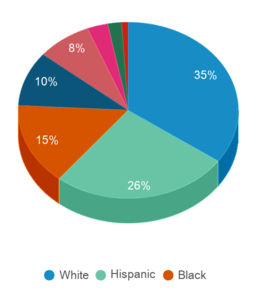
Diversity Score
0.53
0.77
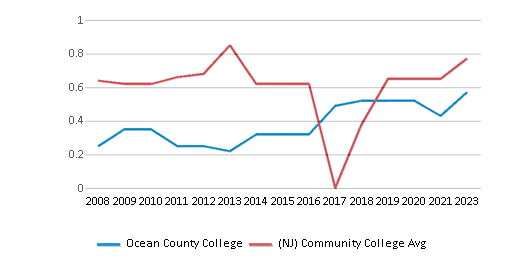
College Completion Rate (Students who graduate in less than 4 years)
0.3963%
0.3963%
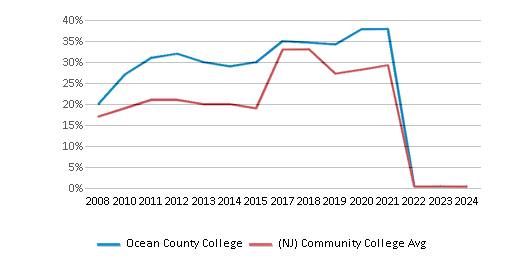
College Completion Rate (Students who graduate in 4 years or more than 4 years)
n/a
0.42%
Average Graduate Earnings (10 Years)
$37,000
$36,100
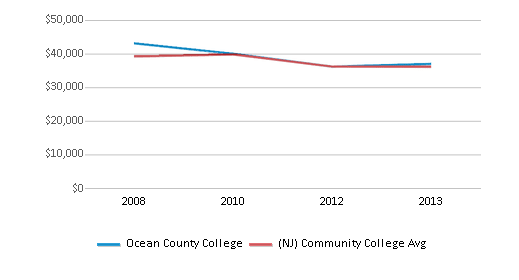
Tuition and Acceptance Rate
The public in-state tuition of $4,515 is less than the state average of $5,470. The in-state tuition has declined by 9% over four years.
The public out-state tuition of $7,695 is more than the state average of $7,575. The out-state tuition has grown by 12% over four years.
In-State Tuition Fees
$4,515
$5,470
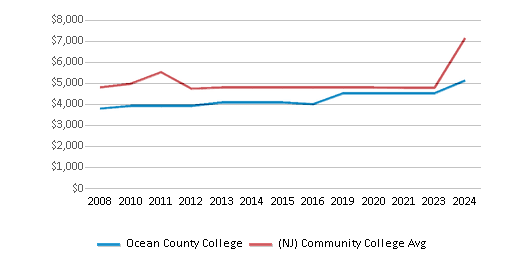
Out-State Tuition Fees
$7,695
$7,575
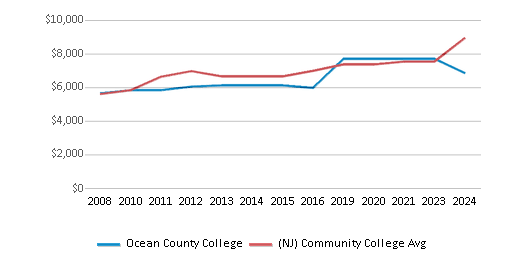
Tuition Notes
Tuition and fees are 150.50/credit for in-county students and 256.50/credit for out-of-state students. The above totals are approximate for a full year with Ocean.
% Students Receiving Some Financial Aid
64%
87%
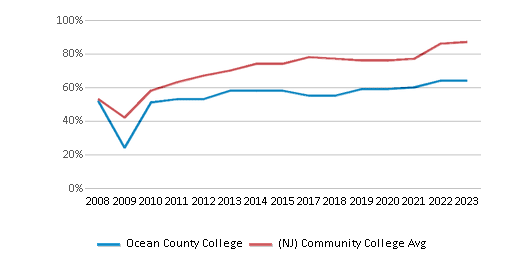
Median Debt for Graduates
$12,000
$11,000
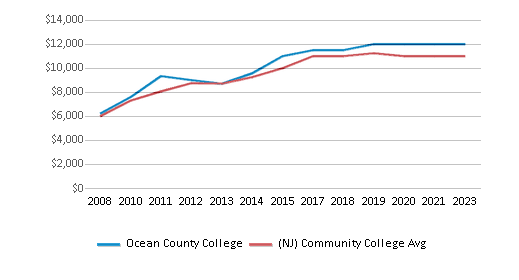
Median Debt for Dropouts
$5,938
$5,500
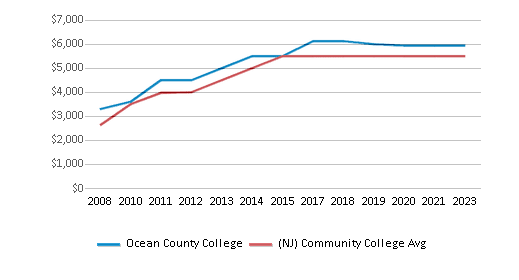
Acceptance Rate
100%
76%

Sports
Total Sports Offered
10 sports
Sports
Baseball, Basketball, Cross Country, Golf, Lacrosse, Sailing, Soccer, Softball, Tennis, Volleyball
Extracurriculars
Total ExtracurricularsTotal Extra-curric.
5 extracurriculars
ExtracurricularsExtra-curric.
Club or Organization:
Honor Societies, Recreation Clubs, Student Government Association, Support Groups
Arts and Music Programs:
Performance Clubs
Honor Societies, Recreation Clubs, Student Government Association, Support Groups
Arts and Music Programs:
Performance Clubs
Source: 2024 (or latest year available) Integrated Postsecondary Education Data System (IPEDS)
School Notes
- For more than 40 years, Ocean County College, a public two-year community college sponsored by Ocean County and the State of New Jersey, has provided area residents with the opportunity to benefit from higher education. Ocean County College is located in Toms River, the county seat of Ocean.
- Ocean offers its students a plethora of degree and certificate programs, allowing them to pursue their education with both credit and non-credit classes. Many of our programs are designed to facilitate easy transfer to four-year universities for our students. We offer honors options, career development, courses for licenses, business education training, as well as continuing and professional education programs. Students can find these offerings available during the day, evening, weekend, at off-campus locations, and online. Through our various clubs and organizations, as well as our Student Leadership Development Program, students are able to pursue both personal and professional enrichment.
- The college is accredited by the Middle States Association of Colleges & Schools and National League for Nursing Accrediting Commission.
Frequently Asked Questions
How much does Ocean County College cost?
Ocean County College's tuition is approximately $4,515 for In-State students and $7,695 for Out-State students.
What is the acceptance rate of Ocean County College?
The acceptance rate of Ocean County College is 100%, which is higher than the state average of 76%.
What sports does Ocean County College offer?
Ocean County College offers 10 interscholastic sports: Baseball, Basketball, Cross Country, Golf, Lacrosse, Sailing, Soccer, Softball, Tennis and Volleyball.
What is Ocean County College's ranking?
Ocean County College ranks among the top 20% of community college in New Jersey for: Largest student body.
Recent Articles

Obtaining Your Bachelor's Degree at a Community College
Explore the evolving landscape of community colleges offering bachelor's degrees, addressing affordability, accessibility, and workforce needs.

A to Z of Community College Certificates and Courses
From business and healthcare to technology and skilled trades, the article showcases the breadth of options available to students seeking to enhance their knowledge, develop new skills, or pursue career advancement.

What is a Community College?
This comprehensive guide explains what a community college is, its history, and its role in higher education. It covers the types of programs offered, differences from four-year colleges, benefits of attending, and important considerations for prospective students, providing valuable insights for those exploring educational options.

